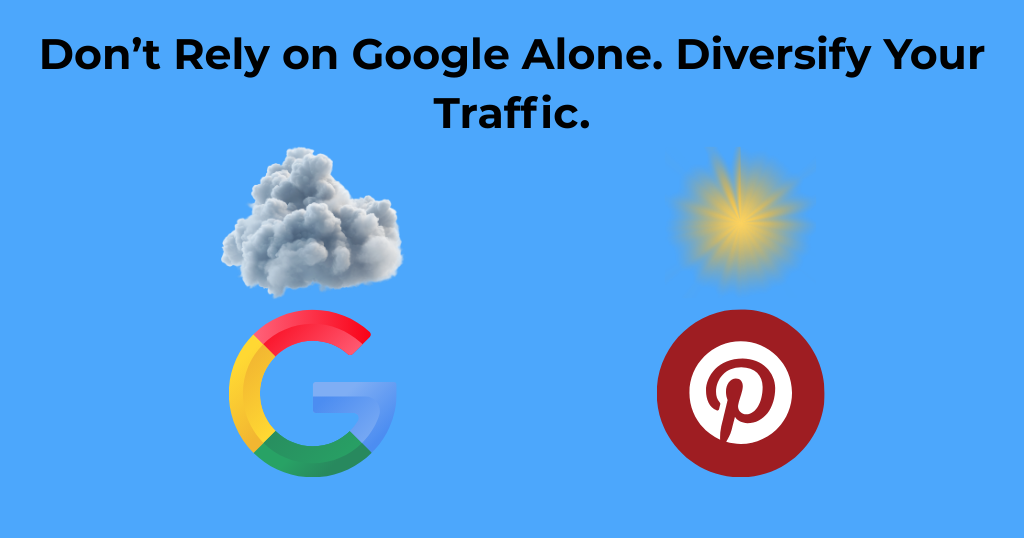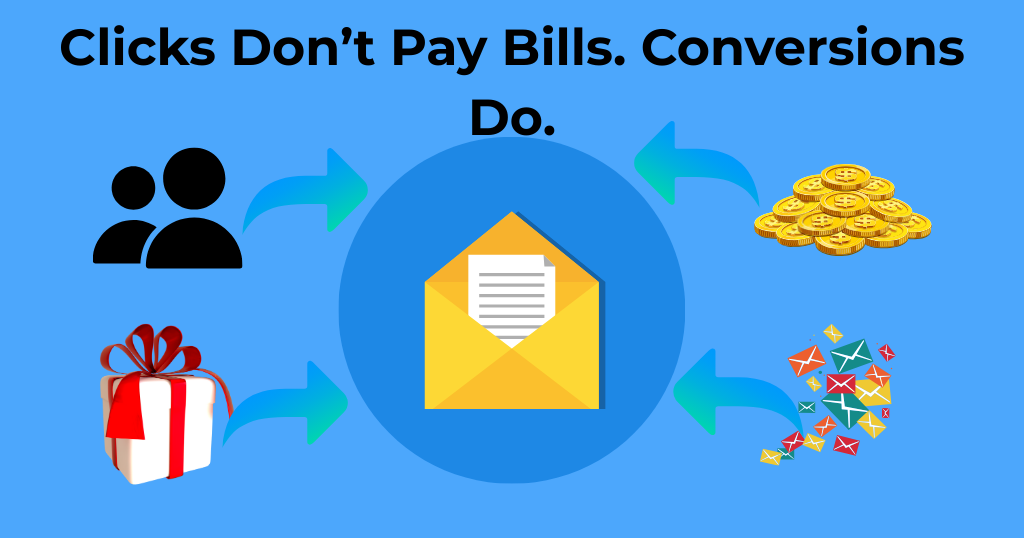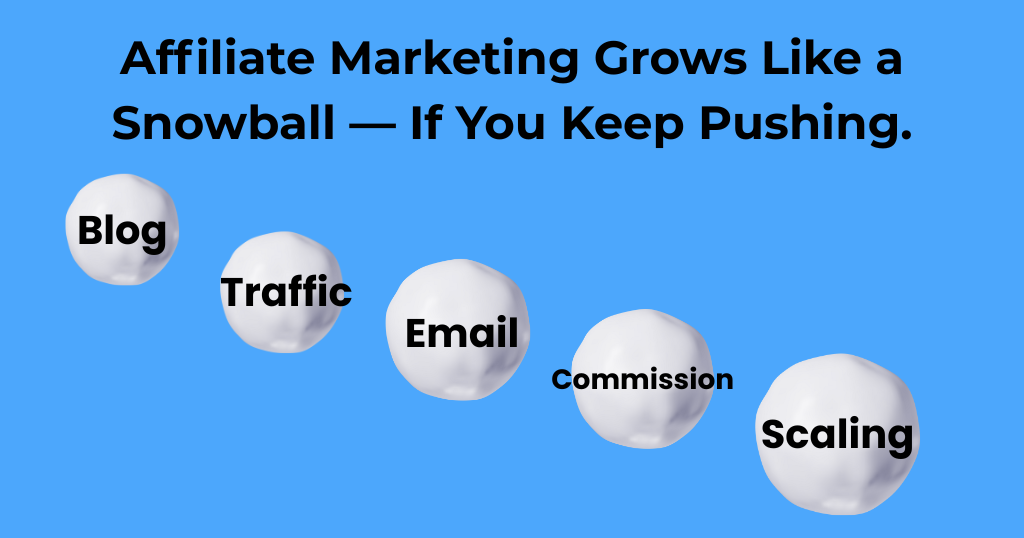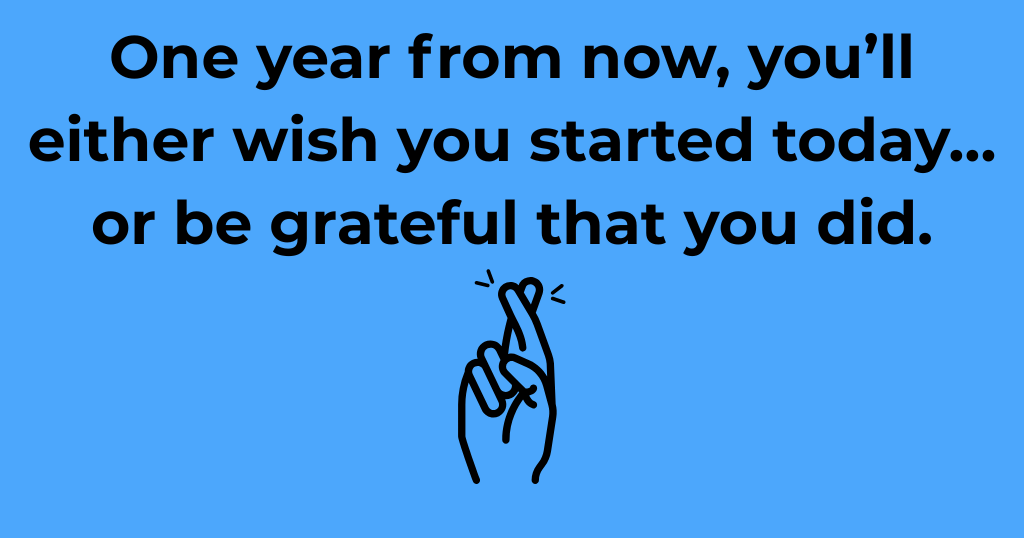Step 1 – Laying the Foundation (Your Digital House)
When I first heard about affiliate marketing, I’ll be honest — I thought it was one of those internet scams. I Googled how to start affiliate marketing for beginners step by step, but all I found were half-baked promises and people flashing screenshots with no real guide.

It wasn’t until I started experimenting myself — setting up my first blog, fumbling through funnels, and finally making my first $100 — that I realized affiliate marketing actually works. But only if you follow a clear beginner affiliate marketing strategy.
That’s what this guide is: a real, step-by-step walkthrough. No hype. Just what actually worked for me — and what will work for you in 2025.
When I first heard about affiliate marketing, I’ll be honest — I thought it was one of those internet scams. I Googled how to start affiliate marketing step by step, but all I found were half-baked promises and people flashing screenshots with no real guide.
It wasn’t until I started experimenting myself — setting up my first blog, fumbling through funnels, and finally making my first $100 — that I realized affiliate marketing actually works. But only if you follow a clear beginner affiliate marketing strategy.
That’s what this guide is: a real, step-by-step walkthrough. No hype. Just what actually worked for me — and what will work for you in 2025.
⚖️ Affiliate Disclosure– This post may contain affiliate links. That means if you click and make a purchase, I may earn a small commission at no extra cost to you. I only recommend tools, products, and resources that I use personally and believe bring real value to my readers. Your support helps me keep creating free, high-quality content to guide beginners on their affiliate marketing journey.
Step 2 – Choosing the Right Niche (Don’t Build a House on Sand)
When I launched my first blog, I made the same mistake a lot of beginners do: I picked a niche just because I thought it was “popular.” One week I was writing about fitness, the next week about travel, and then I even threw in a recipe post. Guess what? Google didn’t trust me. Pinterest didn’t know how to categorize me. And readers definitely didn’t see me as an authority.

It was like I was building three half-finished houses at once — and none of them felt like home.
That’s when I realized something simple but powerful: your niche is your foundation. A solid beginner affiliate marketing strategy starts with choosing one niche. Pick the wrong one, and you’ll always struggle. Pick the right one, and suddenly everything feels lighter.
Here’s how I approached it the second time:
- I asked myself: What do I actually enjoy talking about, even if no one’s paying me yet?
- I checked: Are people spending money in this space? (because passion alone doesn’t pay bills).
- And finally: Could I see myself writing at least 30–40 articles around this topic without running dry?
That’s how I landed on affiliate marketing and lifestyle products — they checked all the boxes. I had stories, I could help beginners, and yes, there’s real money flowing through these niches.
👉 Pro Tip: If you’re not sure where to start, think of your blog as a library. Each category is a “shelf.” Would you rather have one shelf packed with useful, valuable books (articles) or ten shelves with just one or two books scattered around? Google rewards the packed shelf — depth over randomness.
This is also where your traffic roads (Pinterest, social) play a role. Pinterest thrives on niche clarity. If you’re writing about skincare one day and car gadgets the next, your pins confuse the algorithm. But if your pins consistently hit one topic — say, affiliate marketing tips or Amazon home finds — Pinterest knows exactly who to send your content to.
So, my advice? Don’t chase every shiny topic. Anchor yourself in one clear niche. Build depth. Own it. Then, when you’ve built authority and traffic flow, you can expand.
Because here’s the truth: even the best tools — Hostinger for hosting, Systeme.io for funnels, or PinClick for Pinterest research — won’t save a scattered blog. Your niche is the soil. Plant the right seed, and the whole system grows.
Step 3 – Building Your Funnel the Smart Way
When I started, I thought affiliate marketing was just about dropping links on a blog post and waiting for magic to happen. Spoiler: it didn’t.
I remember getting my very first 50 visitors to my blog. I was so excited. But when I checked the stats the next morning, they were all gone. No clicks, no subscribers, nothing. It hit me: I had opened my digital house but forgot to put in a doorway where guests could actually come in and stay.
That doorway is your funnel.
A simple affiliate marketing for beginners step by step funnel looks like this:
- Someone visits your blog or Pinterest pin.
- They land on a page where you offer something free (a checklist, a mini-guide, or even a video).
- They join your email list in exchange.
- Over time, you nurture them with emails that add value and recommend products that solve their problems.
That’s when I discovered Systeme.io. It let me build my first affiliate marketing funnel in less than an hour — landing page, email sequence, and automation all in one. Systeme.io simplified everything: blog + opt-in + email + automation → all in one dashboard.
The first time I set up a funnel there, I felt a sense of relief. I wasn’t just “blogging for Google” anymore. I had a system that caught people the moment they showed interest.
Here’s what my simple funnel looked like (and what you can replicate in under an hour):
- A blog post → with a freebie offer (like “Affiliate Starter Checklist”).
- A Systeme.io landing page → to collect emails.
- An automated welcome sequence → where I shared my story, gave value, and introduced helpful tools (like Hostinger and PinClick).
That funnel was the turning point. Suddenly, those 50 visitors weren’t vanishing into thin air. They were becoming subscribers, clicking my links, and a few even made their first purchases through me.
👉 This is where affiliate marketing becomes real: not just traffic, but traffic that converts.
So don’t just think about publishing more posts. Think about how each visitor walks through your digital house. A blog without a funnel is like a house with no doors — people see it, but they never come in. With Systeme.io, you’re not just inviting them in, you’re giving them a reason to stay.
Step 4 – Driving Free Traffic Without Ads
I’ll never forget the first time one of my pins took off on Pinterest. I had been blogging for weeks, staring at Google Analytics with barely a trickle of visitors. Then, out of nowhere, a single pin brought in 600 clicks in 24 hours. For me, that was the lightbulb moment: you don’t need ads to get traffic — you need strategy.

That’s when I realized — you don’t need ads to get traffic. You need strategy. Pinterest became my #1 free traffic driver. And with PinClick Pinterest keyword research, I stopped guessing and started using the exact phrases buyer’s type. That’s when my pins doubled in reach.
Why Pinterest works for beginners:
- Pins don’t disappear in 24 hours like Instagram stories. They live for months, even years.
- Pinterest is a search engine with buyer intent, not just social media — people go there with buying intent.
- You don’t need thousands of followers. You need the right keywords and consistent posting.
But here’s the catch — most beginners fail on Pinterest because they post blindly. That’s exactly what I did at first. I wasted hours designing pretty pins that got zero clicks. Why? Because I wasn’t using the right keywords.
The first time I ran my niche through PinClick, I was shocked. I thought “affiliate marketing” was my keyword. But PinClick showed me long-tail gems like “Pinterest affiliate marketing strategy” and “affiliate marketing tips for beginners” — phrases people were actually searching.
When I optimized my pins with those keywords, my traffic doubled. Suddenly, I wasn’t just guessing — I had data.
Here’s my current flow (and one you can copy):
- Use PinClick to find keywords that real users type into Pinterest.
- Design 3–5 pin variations for each blog post (simple Canva templates work).
- Post consistently — even 1–2 pins per day builds traction.
- Link every pin back to your blog (your digital house).
Pinterest became my traffic road, driving visitors straight into my funnel. And because I paired it with Systeme.io, those clicks weren’t wasted — they turned into email subscribers and buyers.
But let me be real — Pinterest isn’t the only way. Some beginners want even faster shortcuts, without waiting weeks for traction. That’s where Rapid Traffic Flow (RTF) comes in. It’s a unique system that shows you how to drive instant buyer traffic without relying on Google, ads, or even Pinterest. When I discovered it, I thought: “I wish I had this when I started.”
🚀 Want Faster Traffic?
Pinterest and Google are great for long-term growth, but what if you need clicks fast?
👉 That’s where Rapid Traffic Flow (RTF) comes in. It’s a unique system that shows beginners how to unlock instant buyer traffic — without ads, SEO, or a social following.
➡️ Check Out Rapid Traffic Flow Here
Step 5 – Converting Clicks into Commissions
When I first started, I thought traffic itself would bring money. I remember refreshing my dashboard after 500 visitors came from Pinterest… and seeing a big fat $0. That was the day I realized clicks don’t pay bills — conversions do.

Here’s the shift that changed everything: stop thinking of visitors as numbers, and start treating them like people.
I began writing emails the same way I talk to a friend over coffee. Instead of pushing links, I shared small stories:
- The first time I set up a blog and broke it within an hour.
- How my first funnel on Systeme.io actually worked while I was sleeping.
- Why I almost quit affiliate marketing (and what pulled me back).
Every story had a lesson. And every lesson connected naturally to a product that helped me — Hostinger for my blog, PinClick for Pinterest keywords, Systeme.io for funnels.
👉 That’s when people started replying to my emails saying things like: “This feels like you’re talking directly to me”. That’s the moment I knew I had cracked the conversion code.
Here’s a simple 3-part framework I use in every email (and you can too):
- Story – Something real or relatable (even small daily struggles).
- Value – A tip, insight, or shortcut that helps the reader.
- Soft CTA – A product or tool that makes the tip actionable (affiliate link).
The magic? It doesn’t feel like selling. It feels like helping.
Systeme.io made it easy to automate all of this. Every new subscriber got my affiliate marketing beginners guide delivered automatically, followed by value-packed emails that gently introduced my links. That’s how you turn clicks into affiliate commissions. I set up an automation sequence:
- Email 1 (welcome + freebie delivery)
- Email 2 (story + lesson)
- Email 3 (value tip + product link)
- Email 4 (bonus story + gentle CTA)
Once it’s live, the system runs 24/7. Visitors who arrive at 2 a.m. go through the same experience as someone who comes at noon. And some of those turn into commissions while I’m asleep.
That’s the point of affiliate marketing: building systems that convert clicks into commissions without chasing people down.
So remember: traffic is useless unless you capture it and nurture it.
- Hostinger gives you the house.
- Pinterest + PinClick send the guests.
- Systeme.io helps you serve coffee, tell your story, and keep them coming back.
Step 6 – Scaling Beyond Your First $100
I’ll be honest with you — my first $100 commission felt like winning the lottery. I must have refreshed the dashboard 20 times that day, just to make sure it wasn’t a glitch. But here’s the thing: $100 won’t change your life. What matters is what you do next.

A lot of beginners make their first sale and then stall. They stop posting pins, stop writing content, or expect money to magically multiply. That’s not how this works. Scaling is about turning your system into a machine.
Here’s what worked for me after that first $100:
1. Add Upsells and Bonuses
Your base funnel (freebie → tripwire → emails) is great, but you can make more per subscriber by offering:
- A tripwire ($7 product) → something small and irresistible.
- A bonus stack when promoting affiliate products → this makes you stand out from 100 other affiliates. (Ex: “Buy through my link and I’ll give you my Pinterest Pin Templates for free”).
This alone doubled my commissions because people felt they were getting more value with me than anyone else.
2. Repurpose Content into Multiple Streams
One blog post isn’t just a blog post. It can be:
- 5 Pinterest pins.
- 2 LinkedIn posts.
- 1 short YouTube video.
- 1 email to your list.
The more places your content lives, the more chances people have to find you. And tools like PinClick keep you from guessing what people actually search. That’s how I built an affiliate marketing content loop.
3. Stay Consistent When It Feels Slow
This is where most beginners quit. They publish for 2 months, don’t see $1,000 yet, and stop. But affiliate marketing is like planting seeds. Some sprout fast (a viral pin, a blog post that ranks), and others take months. The ones who win are the ones who keep watering.
4. Invest Back Into Your System
When I hit $500/month, I didn’t buy new shoes — I reinvested. A better Canva plan for pins, a small $5/day Facebook ad test, and even upgrading my Systeme.io account to unlock more automations. That’s how I went from “just starting” to a business that felt real.
And yes — affiliate marketing without investment is possible to start, but scaling requires reinvesting in the system.
Scaling is where most beginners hit burnout. They post for 2 months, don’t see $1,000 yet, and stop. I’ve been there — exhausted from posting and pinning daily.
That’s when I came across Free Post Zone (FPZ). It helps automate posting and content flow so you don’t burn out. Imagine multiplying your reach without spending every night glued to your laptop. For me, it was the difference between feeling stuck and finally having space to breathe while still growing.
📌 Struggling to Stay Consistent?
Affiliate marketing isn’t hard — staying consistent is. Most beginners quit because they can’t keep up with posting.
👉 Free Post Zone (FPZ) helps you automate and systematize your content flow so you can grow without burning out.
➡️ Discover Free Post Zone Here
Final Verdict: Your Beginner’s Roadmap in 2025
If you’ve made it this far, you already know the truth: affiliate marketing isn’t about quick tricks or chasing the latest algorithm. It’s about building a system that works for you, step by step.

Here’s the roadmap in one clear sentence:
- Build your digital house with a blog (I use Hostinger).
- Drive traffic roads with Pinterest and social media (use PinClick).
- Capture and convert with funnels (Systeme.io).
🚀 Want Faster Traffic?
Pinterest and Google are great for long-term growth, but what if you need clicks fast?
👉 That’s where Rapid Traffic Flow (RTF) comes in. It’s a unique system that shows beginners how to unlock instant buyer traffic — without ads, SEO, or a social following.
➡️ Check Out Rapid Traffic Flow Here
📌 Struggling to Stay Consistent?
Affiliate marketing isn’t hard — staying consistent is. Most beginners quit because they can’t keep up with posting.
👉 Free Post Zone (FPZ) helps you automate and systematize your content flow so you can grow without burning out.
➡️ Discover Free Post Zone Here
⚡ Feeling Overwhelmed as a Beginner?
Funnels, traffic, blogs… it can feel like too much. I’ve been there.
👉 That’s why I recommend ARM 2.0 (Affiliate Result Maximized). It’s a complete step-by-step system designed for beginners who want clarity, direction, and results without the guesswork.
FAQ
Is affiliate marketing profitable for beginners in 2025?
Yes, affiliate marketing is still profitable for beginners if you follow a structured system: set up a blog, use traffic channels like Pinterest, and capture leads through funnels.
Can I start affiliate marketing with no money?
Yes, you can start with free tools and social traffic, but investing in a low-cost blog host (like Hostinger) gives you credibility and control.
What is the best funnel builder for beginners?
Systeme.io is the best all-in-one tool for beginners. It allows you to build landing pages, email sequences, and automation in one place.
How long does it take to make your first $100?
Most beginners take 2–3 months if they publish consistently, use the right keywords, and build a funnel to convert clicks into commissions.
Why not just use social media instead of a blog?
Social platforms are rented space — algorithms change and reach can drop. A blog is your owned “digital house” where traffic, email, and offers connect.

Pingback: ARM 2.0 Review: Done-for-You Affiliate Funnels (2025)
Pingback: How a Simple Low Ticket Funnel System Changed Everything